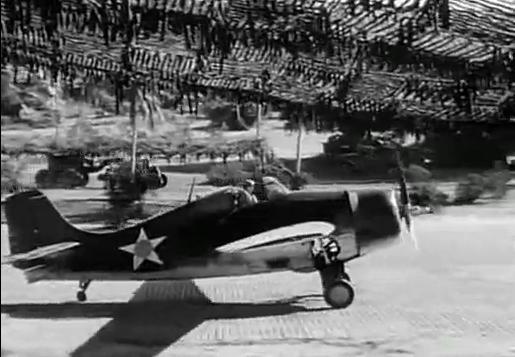Difference between revisions of "Category:Grumman F4F Wildcat"
(Created page with "thumb|right|350px| Grumman F4F Wildcat seen in [[The Fighting Seabees.]] The Grumman F4F Wildcat was an American carrier-based fighter aircr...") |
|||
| Line 1: | Line 1: | ||
| + | {{DEFAULTSORT:Grumman F04F}} | ||
| + | |||
[[Image: Seabees F4F 1h19mn00.JPG|thumb|right|350px| Grumman F4F Wildcat seen in [[The Fighting Seabees]].]] | [[Image: Seabees F4F 1h19mn00.JPG|thumb|right|350px| Grumman F4F Wildcat seen in [[The Fighting Seabees]].]] | ||
| Line 11: | Line 13: | ||
*[http://en.wikipedia.org/wiki/Grumman_F4F_Wildcat Grumman F4F Wildcat on Wikipedia.] | *[http://en.wikipedia.org/wiki/Grumman_F4F_Wildcat Grumman F4F Wildcat on Wikipedia.] | ||
| − | + | [[Category:Aircraft List]] | |
| − | |||
[[Category: Grumman ]] | [[Category: Grumman ]] | ||
Latest revision as of 00:23, 13 October 2014

The Grumman F4F Wildcat was an American carrier-based fighter aircraft that began service with both the United States Navy and the British Royal Navy (as the Martlet) in 1940. First used in combat by the British in Europe, the Wildcat was the only effective fighter available to the United States Navy and Marine Corps in the Pacific Theater during the early part of World War II in 1941 and 1942. With a top speed of 318 mph (512 km/h), the Wildcat was outperformed by the faster and more nimble 331 mph (533 km/h) Mitsubishi A6M Zero, but its ruggedness, coupled with tactics such as the Thach Weave, resulted in an air combat kill-to-loss ratio of 5.9:1 in 1942 and 6.9:1 for the entire war. Lessons learned from the Wildcat were applied to the faster F6F Hellcat which could outperform the Zero on its own terms. The Wildcat continued to be built throughout the remainder of the war to serve on escort carriers, where larger and heavier fighters could not be used.
This page lists all films that feature the Grumman F4F Wildcat.
See also
Pages in category "Grumman F4F Wildcat"
The following 25 pages are in this category, out of 25 total.